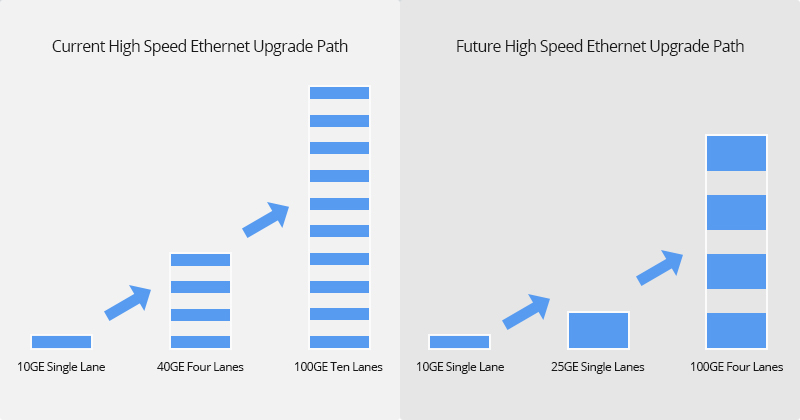
This article first appeared on community.fs.com on November 8, 2021
Driven by the bandwidth requirements of private and public cloud data centers and communication service providers, 100G experienced significant uptake, making network upgrades a necessary and inevitable trend. This post will compare 10G-40G-100G and 10G-25G-100G network migration paths to help users make better choices for network upgrades.
10G-40G-100G Network Upgrade
While 100G and beyond is the next major milestone in hyper-scale data center speeds, 40G may yet still have longevity in the industry. Traditional enterprises with tier 2 and tier 3 data centers with lower density requirements and smaller budgets can reliably leverage the 40G architecture with 10G service speeds as the current building block.
40G Network Overview: How 40G Ethernet Develops?
Began in 2008 and approved in 2010, 40G Gigabit Ethernet enables the transfer of Ethernet running on QSFP+ at 40 Gbit/s. 40G switches act as core/spine switches for small and medium enterprises, while as aggregation/leaf switches for data centers. Though 40G has been active on the market, its development faces difficulties. Unlike 40G, 100G has done better in standard follow-up, technical solution unification and industrial chain development.
10G-40G-100G Network Migration Path
In the 10G-40G-100G migration path, 10G equipment and cabling systems invested in the past will be utilized. But considering the transceiver modules being used, such a migration path can cost a lot. 40G QSFP+ module is composed of 4 parallel 10G channels, and 100G QSFP+ modules support a parallel channel rate of 10×10G. For the single-channel rate based on 10G, the 10G-40G-100G migration path requires more fibers, resulting in more complicated cabling and higher costs.
On the other hand, when QSFP modules are used in long-distance transmissions, such as the QSFP+ LR4 optical module, they integrate 4 channels of 10G into one optical fiber link through wavelength division multiplexing (WDM). It is part of the reason why the cost of QSFP optical modules remains high, especially for 40G modules with a longer transmission distance, such as QSFP+ ER4, which also increases the cost of a 100G network upgrade.

Figure 1: 10G-40G-100G Network Upgrade
10G-25G-100G Network Migration
Data centers are expanding at an unprecedented pace, driving the need for higher bandwidth between the server and switches. To cater to this trend, networking and the Ethernet industry are moving from 10G to 25G, which offers significant density, cost, and power benefits for server-to-top-of-rack connections.
25G Network Overview: How 25G Ethernet Develops?
Initially proposed in 2014, 25GbE has been adopted and pushed by companies like Google, Microsoft, Arista, Mellanox, etc., for top-of-rack server networking. 25G network switches are often used as the ToR or leaf switches to connect the servers and terminal equipment, which can support link speeds faster than 10G with no increase in cable/trace interconnect. While keeping pace with the faster and richer growth trajectory of networking bandwidth, no changes in configuration help reduce power consumption and cost.
10G-25G-100G Network Migration Path
The single-channel 25G speed is 2.5 times the transmission efficiency of 10G, while in a 100G network, only 4 channels 25G modules are needed to achieve the 4×25Gb/s mode. This will greatly save fiber links, but this migration path will eliminate the original 10G equipment in the system. This migration has boosted overall system throughput by 2.5x with small incremental costs, for which 25G servers and 100G switches have become ubiquitous in hyper-scale data centers, gradually replacing previous 10G servers and 40G switches. As the Ethernet industry continues to innovate and lay a path to higher networking speeds like 200G and 400G, the 25G-100G upgrade has been developed as an inevitable roadmap for future data centers.

Figure 2: 10G-25G-100G Network Migration
Network Migration Paths Comparison: Why Upgrade 10G to 25G?
Before the 25GbE specification was released, the 10G-40G upgrade path was predominantly adopted as an option for enterprises, service providers and data centers to scale beyond 10GbE. However, with the emergence of 25GbE, the 25G-100G upgrade path has gained more momentum. What is the difference between 25G and 40G upgrading paths? Should I upgrade from 10G to 25G?
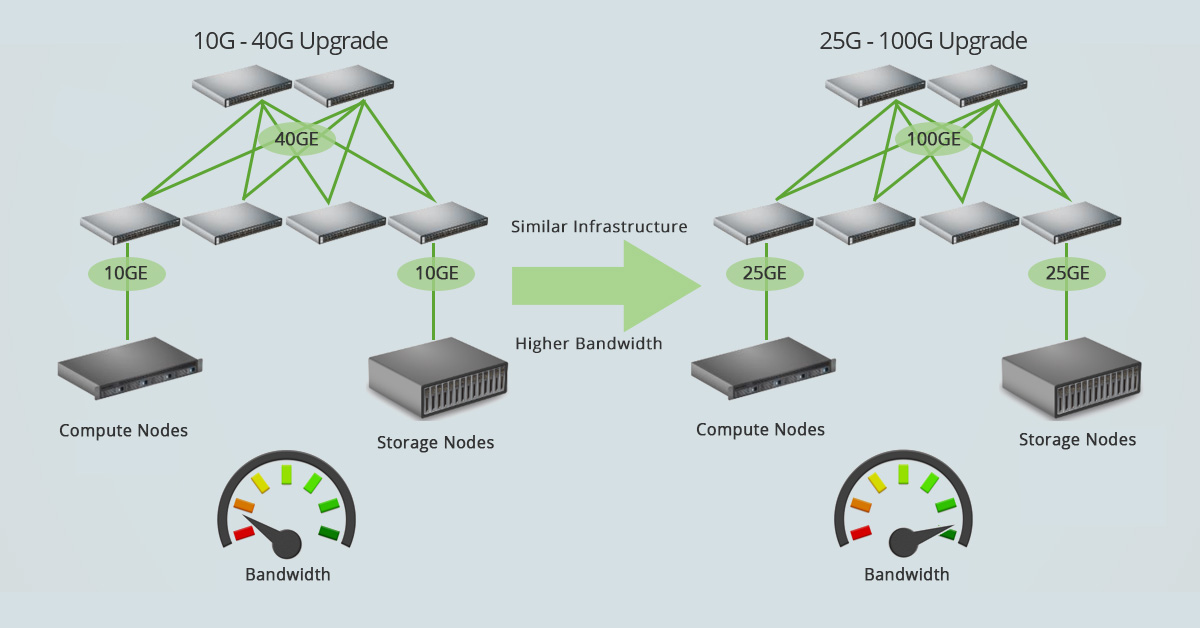
Figure 3: 10G-40G vs 25G-100G Network Upgrade Path
It can be easily found that there are some obvious advantages in the process of 10G-25G-100G migration compared to 10G-40G-100G path:
- Reduced Cost: 25G-100G migration path can offer both CapEx (capital expenditures) and OpEx (operational expenditures) savings through backward compatibility, for investment protection and seamless migrations with consistent rack-design and reuse of the existing cabling infrastructure, avoiding costly and complex changes.
- Power Saving: Single-lane 25G SerDes technology utilized in 100G Ethernet to 25G connectivity is similar to that in 40G to 10G connectivity, but the performance is increased by 2.5 times, thus reducing the power and cost per gigabit significantly. This power savings will, in turn, result in lower cooling requirements and operational expenditure.
- Higher Density: 25G Ethernet provides higher port and system density than a comparable 40G solution. The 25G-100G (4x25G lanes) network migration path provides a lower cost per unit of bandwidth by fully utilizing switch port capabilities when compared to the 40G-100G upgrade path.
Conclusion
The most important condition when choosing a network migration path is to consider your business scale and future expansion. For the growing needs of the network and long-term benefits, upgrading from 25G to 100G is the optimal way. But there is no need to pursue a 10G-25G-100G migration path while deployed with 40G network and the current network can fit your needs. Of course, by offering more bandwidth and higher port density with reduced power consumption and cost, the 10G-25G-100G Ethernet network migration path overturns the traditional 10G-40G-100G connectivity to improve data center efficiency, thus laying the foundation for further upgrades to 200G and 400G.
Latest Articles
Tue Dec 09 2025
Why MikroTik Should Be in Your 2026 Network PlanMon Oct 13 2025
Netgate pfSense+ Security Gateways: The Security Gateway Built for the Demands of Modern EducationWed Sep 03 2025
hello worldRelated Articles
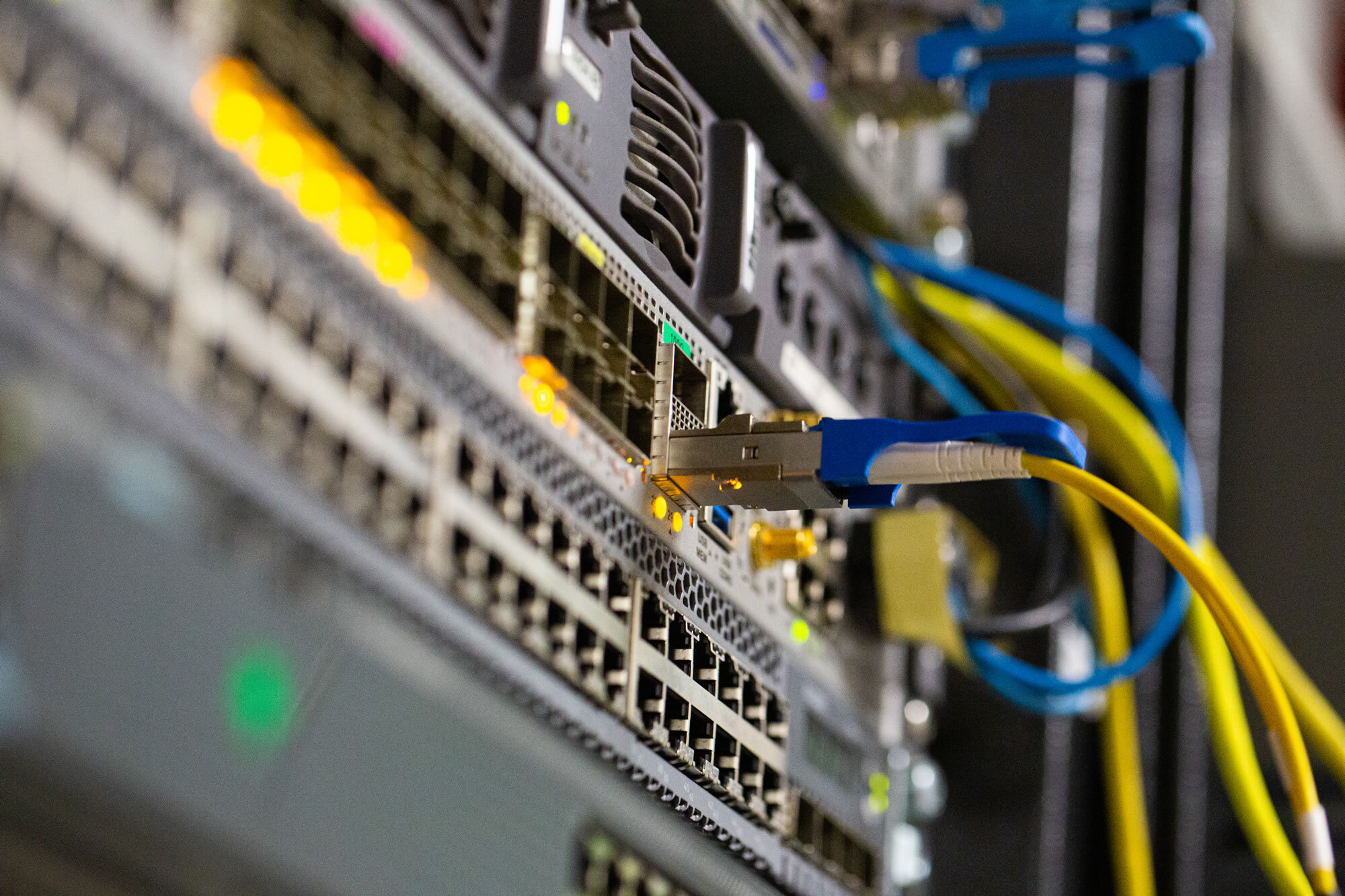
Building The Future High-Speed Network: The Migration To 100G

Asante Customer! Happy Customer Service Week.
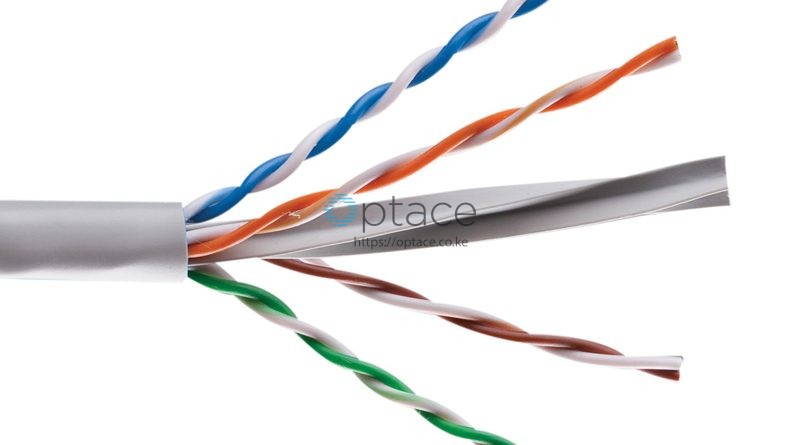
Network Cabling: Unshielded Twisted Pair (UTP)
Unshielded Twisted Pair (UTP) is a ubiquitous type of copper cabling used in telephone wiring and local area networks (LANs). There are five types of UTP cables — identified with the prefix CAT, as in category — each supporting a different amount of bandwidth. Alternatives to UTP cable include coaxial cable and fiber optic cable. […]
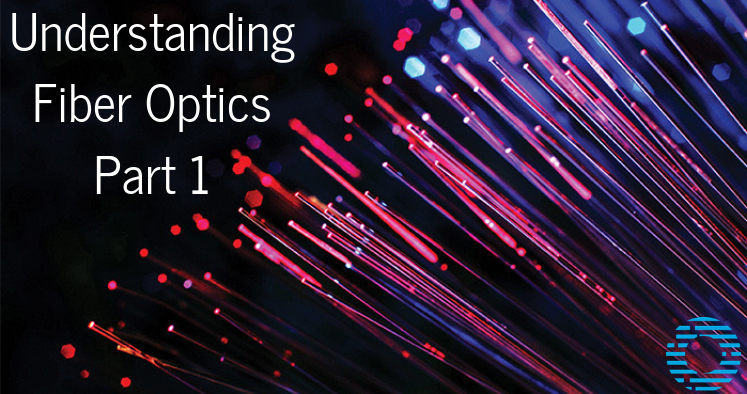
Understanding Fiber Optics [Part 1] – Fiber Optic Cables

© 2025 PoweredbyOptace Networks Limited. All Rights Reserved.
